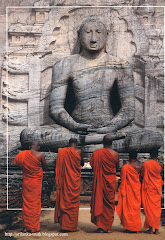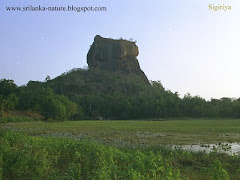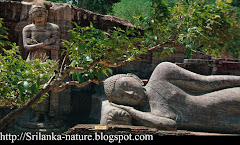Pre –History about Sri Lanka
Traditionally, the recorded History of Sri Lanka boasts of 25 chronicled centuries. However, the inhabitation of the country goes back much further, to the Balangoda People , about 32,000 - 3000 BC. Most of Sri Lanka's History is based on the Book called “Mahawamsa”, However, there have been instances where historic rock inscriptions have been contrary to the Mahawamsa.
The island is estimated to have been colonised by the Balangoda People (named after the area where their remains were discovered) about 34,000 years ago. They have been identified as a group of Mesolithic hunter gatherers who lived in caves. Several of these caves including the well known “Batadombalena” and the “Fa-Hien Rock” (cave) have yielded many artifacts that points to them being the first inhabitants of the island.
The [Sandakelum people] appear to have been responsible for creating Horton Plains, in the central hills, by burning the trees in order to catch game. However, discovery of Oats and Barley on the plains dating to about 15,000 BC suggest they may have engaged in agriculture.
Several minute granite tools of about 4 centimeters in length, earthenware and remnants of charred timber, and clay burial pots that date back to the Stone Age Mesolithic Man who lived 8000 years ago have been discovered during recent excavations around a cave at Varana Raja Maha vihara & also in Kalatuwawa area.
Cinnamon, which is native to Sri Lanka, was in use in Ancient Egypt in about 1500 BC, suggesting that there were trading links with the island. It is possible that Biblical Tarshish was located on the island (James Emerson Tennent identified it with Galle)
The Iron age in Sri Lanka begins about 1000 BC. A large settlement appears to have been founded before 900 BC at the site of Anuradhapura and signs of an Iron Age culture have also been found. The size of the settlement was about 15 hectares at that date, but it expanded to 50 ha, to 'town' size within a couple of centuries. A similar site has been discovered at Aligala in Sigiriya.
It is suspected that the hunter gatherer people known as the Wanniyala-Aetto or Veddas, who still live in the Central, Uva and North-Eastern parts of the island, are relatively direct descendants of the first inhabitants (Balangoda man). They may have migrted to the island from the main land around the time humans spread from Africa to other parts of the world.
In the 6th century BC, Sri Lankans developed a unique hydraulic civilization, producing the largest reservoirs and dams up until the 20th century, enormous pyramid-like Stupa (Dagaba) architecture, within a culture nourished by Buddhism. It was forced to deal with South Indian invasions in the tenth century and European expansions in the sixteenth century).
In the 5th century B.C., Indo-Aryan emigrated from India, mixed with the Hela people and later Buddhism was established and helped develop the Sinhalese culture in Sri Lanka. According to Buddist scriptures the Buddha is said to have visited the island on three occasions to see the Naga Kings, thought to be Tamil speakers and who at one time time ruled various kingdoms throughout all of North and South India before being driven out by the Aryan invaders. Prior to this period in time. More than 70% of Sinhalese populace considers itself to be Buddhist. Along with the Sinhalese, there is a Tamil Hindu population on this island.
The earliest chronicles the Dipavamsa and Mahavamsa say that, before the migration of Vijaya, tribes of Yakkhas (demon worshippers), Nagas (cobra worshippers) and devas (god worshippers) inhabited the island.
Pottery has been found at Anuradhapura, bearing Brahmi script and non-Brahmi writing, dating back to 600 BC. One of the oldest examples of the script.
(source by : books & Wikipedia)
Find the Truth
Gee
Are you Satisfy about this blog


















No comments:
Post a Comment